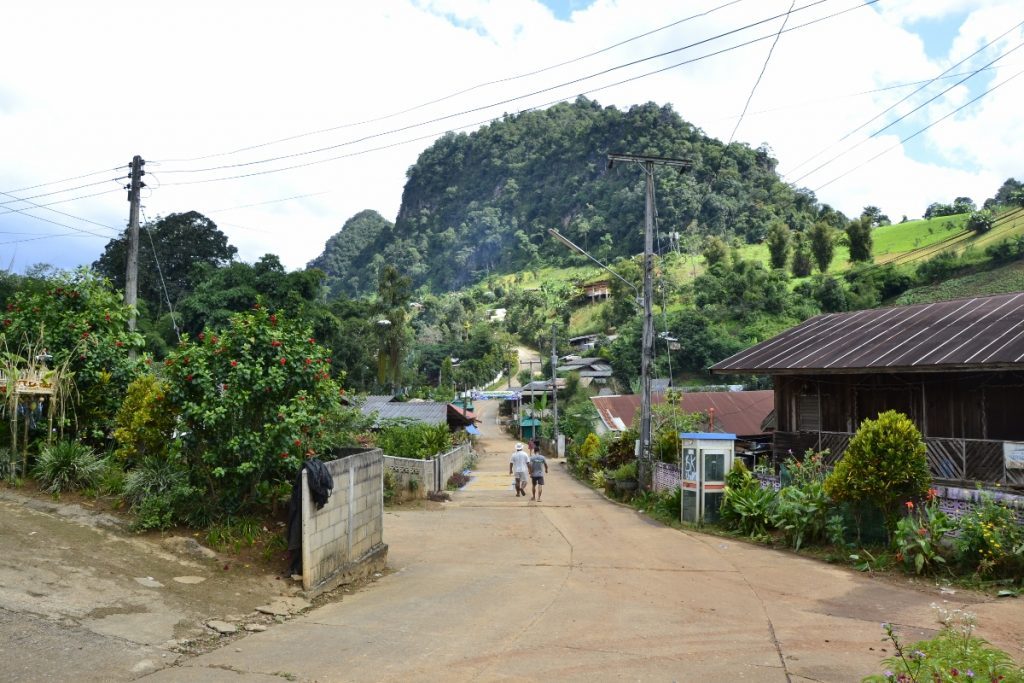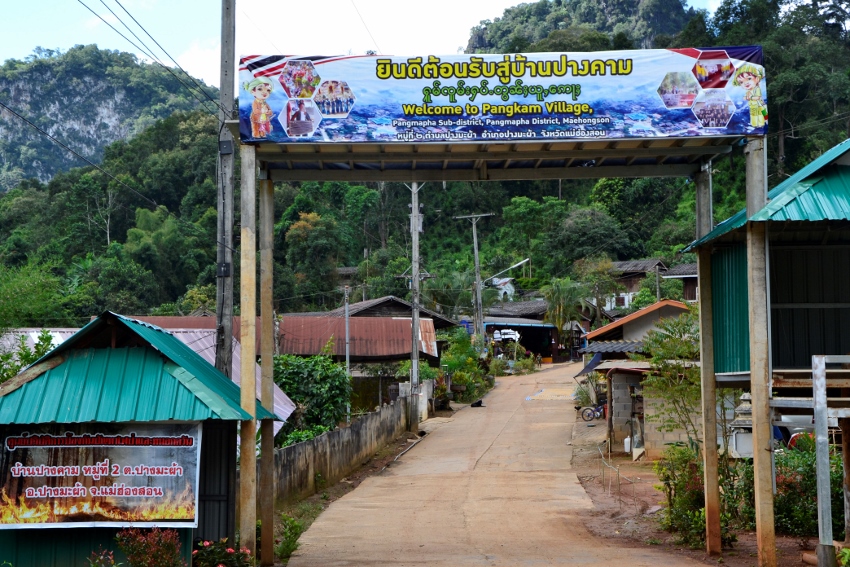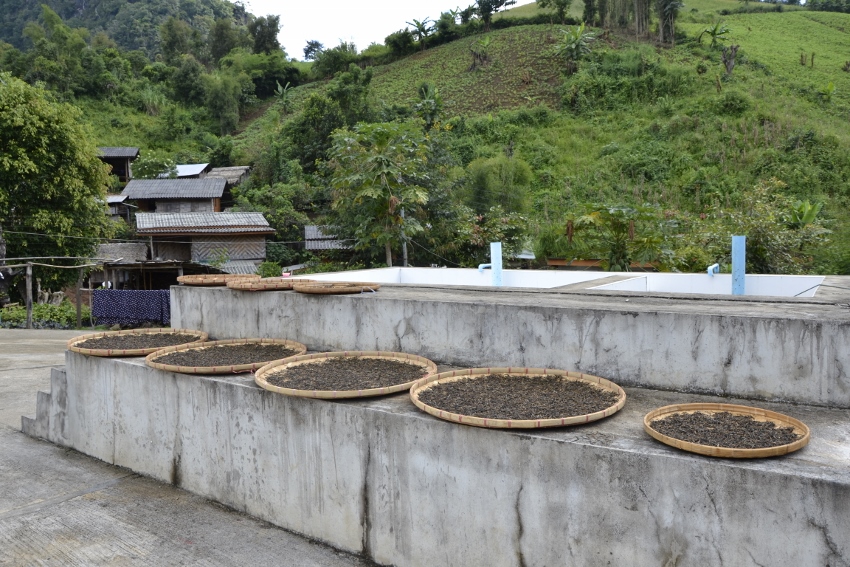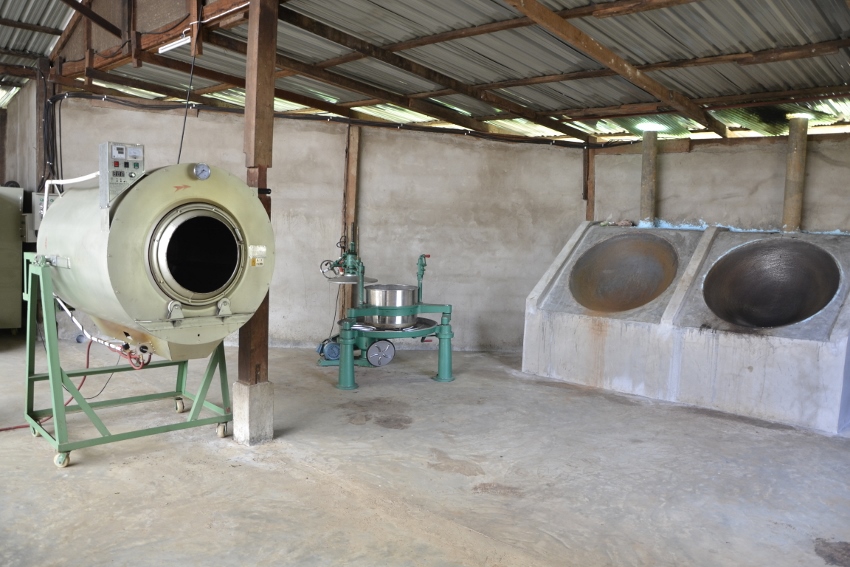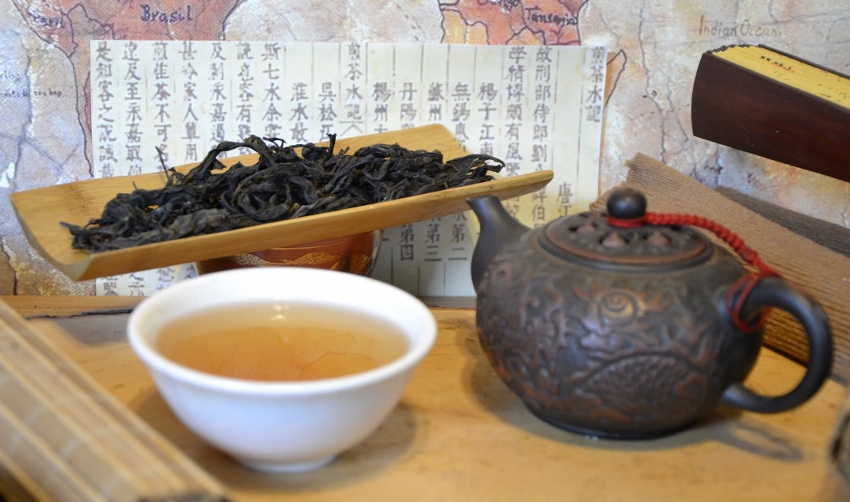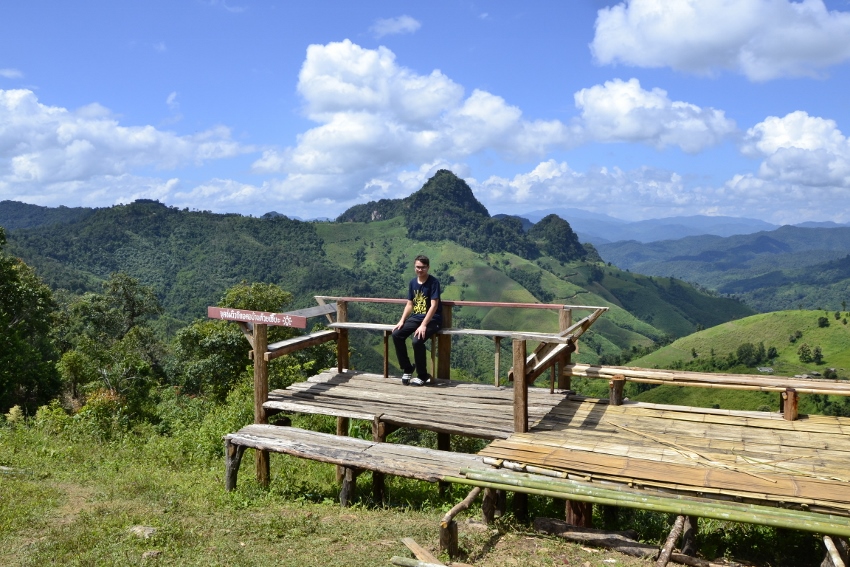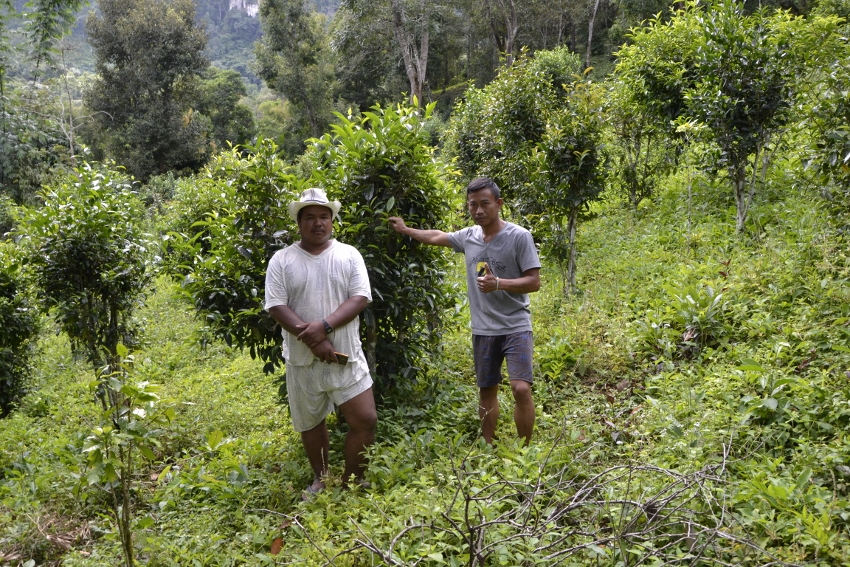October 31, 2019
Pang Kham – Tea Village in No-Man’s-Land 2010
It’s been almost 10 years now since I first visited the tea village Pang Kham, origin of my ShanTea semi-wild sheng hei cha. At that time, the location near the green border between Thailand and Myanmar had been difficult to access. The last 30 kilometers had led over bumpy sand and gravel roads. These in turn were peppered with roadblocks of the Thai military, with no way through for ordinary travelers. Back then, a local guide had gotten us through all of this. The original incentive for my trip to to Pang Kham had been rumors about an ancient wild tea tree population nearby the village.
In Pang Kham I found an old Shan farmer tending a small tea factory in the village. Here he processed the leaves from the village’s tea trees to a truly authentic “sheng” tea at artisanal level. And so it happened that I bought my first 360kg of tea for resale purposes and sent it to Germany. Since then, my ShanTea has been ripening there to my utmost satisfaction. Also, the tea has made an ever growing fan community at Siam Tea Shop during that time… The whole story of my first trip to Pang Kham tells my now also almost 10 years old blog article
Pang Kham – Tea Village in No-Man’s-Land
Phang Kham – Tea Village in No-Man’s Land Revisited 2019
10 years is a long time … That long that even my little tea shoppie has managed to reduce the originally abundant stock of ShanTea to an alarmingly overseeable rest. This is what finally got Pang Kham on my “must do” list for this year’s visit to Northern Thailand… And of course I was curious if I would still find Pang Kham, the tea trees, my old ShanTea farmer and his rather rustic tea factory there.
The Road to Pang Kham 2019
Well, the first point on that list should prove to be a breeze… As the formersand and gravel road is now a continuous paved road. And finding Pang Kham has come a taks question of simply following the dedicated signboards.
Unchanged, however, are the breathtaking panoramic views of the surrounding highlands, which you can admire almost all the way along. Only that a meanwhile properly laid power line is in the way of unspoilt pictures now at times.
Even today, Thai Army roadblocks repeatedly block our way. But there seem to be less of them now … And the alert of the rather friendly soldiers posted there cooks on a low flame. At any rate, they don’t find it any unusual for somebody to go to Pang Kham to buy tea.
And there’s more that has happened during the past 10 years to connect the former no-man’s-land with the world. For example, Pang Kham has proper power supply now. And the internet connectivity here appears to be better than that in my home town in Germany…
Pang Kham – Home of ShanTea 2019
At the entrance to Pang Kham, my heart leaps with joy as the building of the old tea factory appears in front of us. Also, there are clear visible signs that somebody still processes tea here…
My joy then gets a damper with the message that “my” old Shan-Farmer is not here anymore. Just 2 years ago he went back to the Shan lands across the border. Before leaving, Before leaving, he handed over the tea production in Pang Kham to younger people of his family. Well, we will see…
So, on to a tour of the now moderately modernized processing hall. Here, a look into the tea crates ready for delivery provides first indications that the generational change might not have done any harm to the quality of the sheng hei cha produced here. A hope that a tasting soon proves to be a fact. And so the green tick comes under the plan, with which I came to Pang Kham this time…
What is ShanTea / Sheng Hei Cha?
Now, what actually is ShanTea? A “sheng hei cha”, as the knowledgable would say, but what is a “sheng hei cha”? Well, if we were in Yunnan, I’d call it a Sheng Pu Erh Tea… “sheng”, this means a naturally repening, sun-dried and otherwise green-tea-style-processed tea from leaves of large-leaf tea tree varieties. If the trees grow in Yunnan, the tea is a “sheng” Pu Erh Tea. However, the the term Pu Erh Tea is reserved to such teas of Yunnan origin. Now, there are similar tea trees in some of the provinces adjacent to Yunnan. And the same applies to adjacent countries such as Laos, Myanmar and the mountainous northern part of Thailand. There, such tea is not referred to as Pu Erh Tea, but as “hei cha” or “dark tea” instead.
Then, why “ShanTea”? Well, simply because the population of Pang Kham village consists of ethnic Shan (also: “Tai Yai”). Most of the families here have escaped from the the continuing unrest in the Shan lands across the border. In Thailand, they seek safety and a normal life. The producers of my Pang Kham tea are such refugees, too. And since their tea culture has brought about this tea, I have given it their people’s name.
ShanTea Wild Sheng Hei Cha as a vintage tea @ Siam Tea Shop
Over the years, during which I watched my ShanTea 2010 ripening with growing enthusiasm, an idea started maturing in me. Why not offer this tea as an annual vintage tea at the Siam Tea Shop? Contrary to this was the place’s difficult accessibility, which had made regular deliveries impossible at that time. Now, however, I found the best conditions to implement my plan: good communication infrastructure, feasible logistics, stable production, best quality standards … And no reason far and wide, why this should change any soon.
ShanTea will therefore be available from 2019 as a continuous annual vintage tea at Siam Tea Shop! And, of course, I didn’t miss the occasion to taking 10kgs of the 2019 vintage right with me…
The Tea Trees of Ban Phang Kham
In 1990 my old Shan tea farmer had brought me to a place near the village where I could admire several hundred year old tea trees in their natural environment. Unfortunately, we – or rather my driver – did not have the time for the associated footwalk through the jungle this time. Well, forbearance is not acquittanceoned … Anyway, those old tea trees are the parents of the now about 70 years old tea trees on the outskirts of Pang Kham.
The originators of the plantation are not the current villagers. Rather, the age of the trees and an abandoned settlement not far from Pang Kham suggest that the original plantation dates back to Chinese Kuomintang settlers. After their expulsion from China by Chiang Kai-shek’s army, these settled in present-day northern Thailand and Myanmar. For example, North Thailand’s most important tea townb, Doi Mae Salong, was established this way. For whatever reason, they apparently left the settlement near today’s Pang Kham again. What they left behind were their tea trees, which in turn should inspire the founding and flourishing of a new settlement years later.
Pang Kham for interested north Thailand travelers
Ca. 10km after Pangmapha, direction Mae Hong Son, turnright off the main road. From here, dedicated signposts point the way… The road is good enough for cars and motorbikes. However, it is still recommendable having somebody with you, who speaks Thai – at the least. As, without a reasoable explanation of your trip’s purpose, the army posts might still not grant passage.
In Pang Kham itself, there is now a “homestay” option, just right hand after entering the village. And only a few meters further, on the left side of the village street, you will find “my ShanTea factory”. Please keep in mind that communication is still difficult here. Even a Thai guide could be of limited help here, as many of the villagers only speak their native Shan language .
For initial contact and as a basis and start point for your trip to Pang Kham I recommend Little Eden Guest House in Pangmapha.


